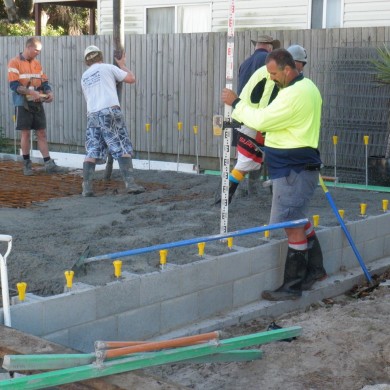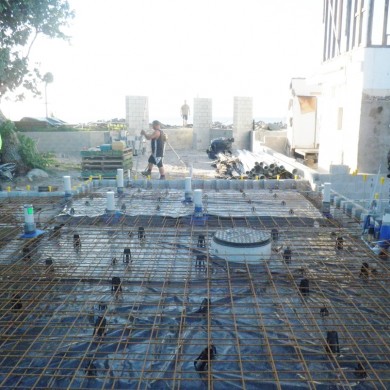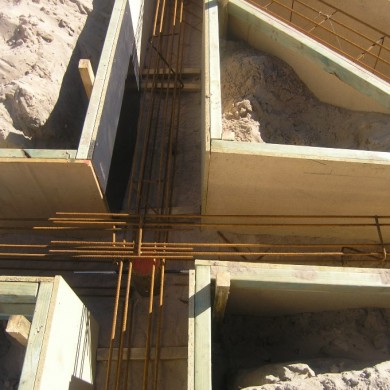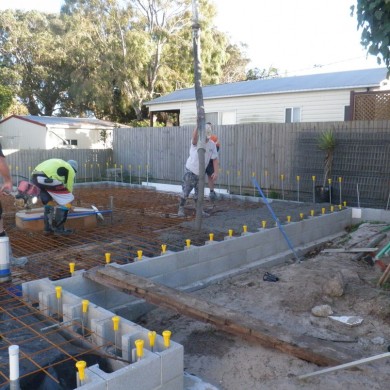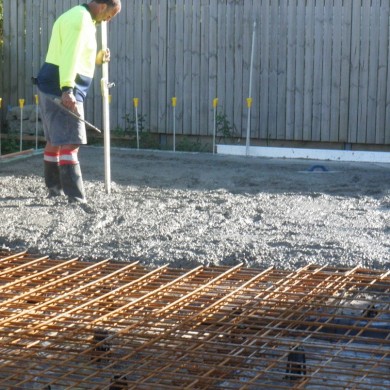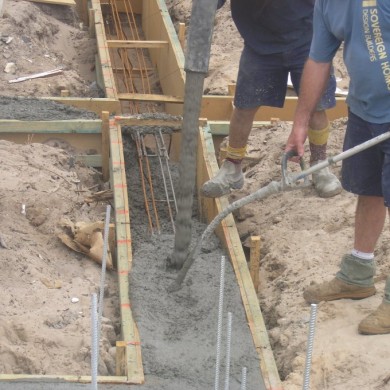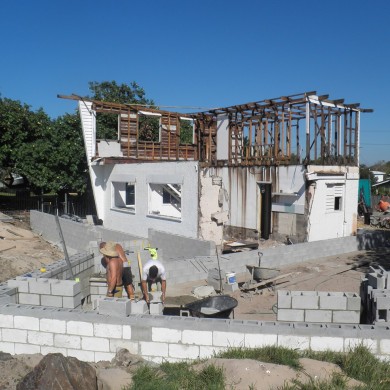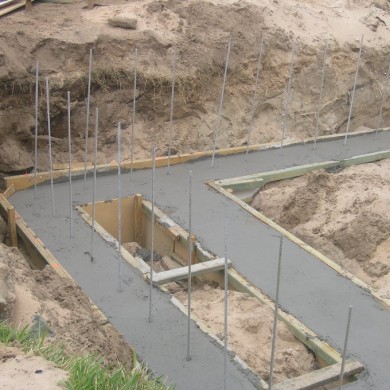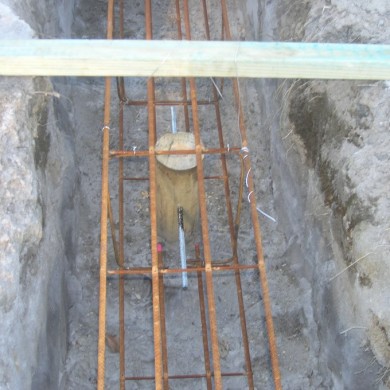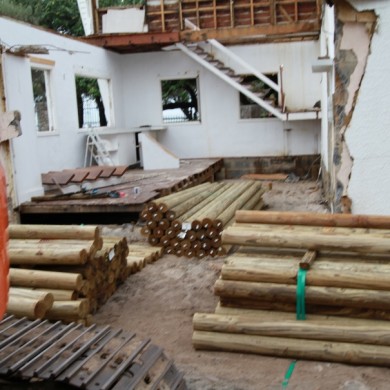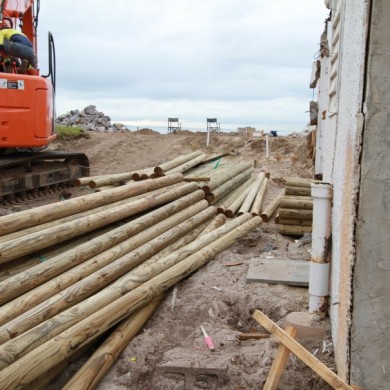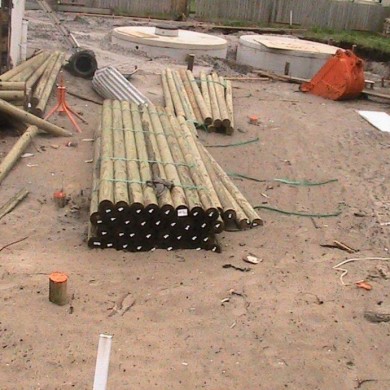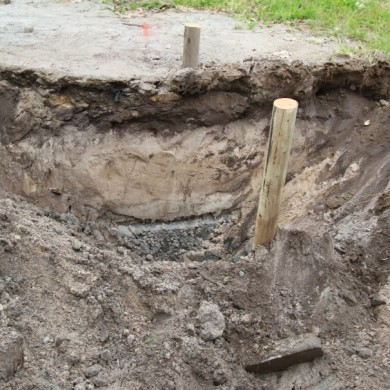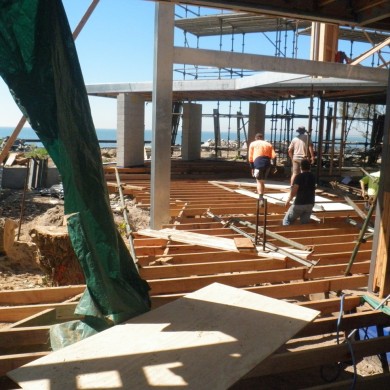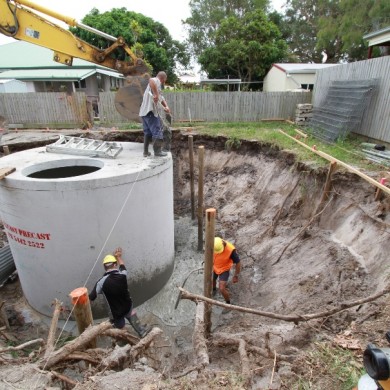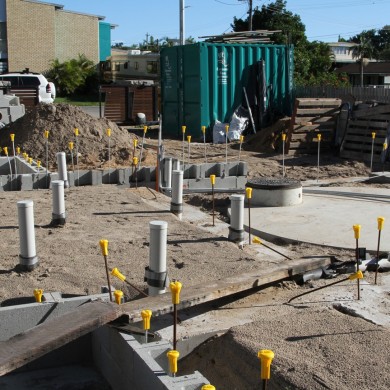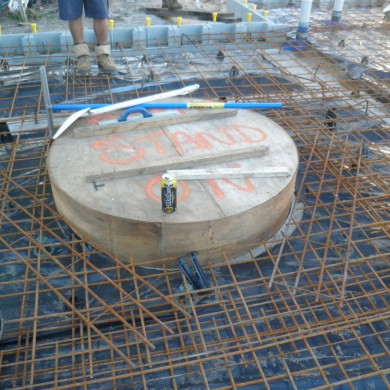The coastal location of The Beachmere Project provided the construction team with many challenges. First priority was to secure the fragile rock wall as protection of the site from further damaging erosion as a result of constant weather events was vital. This was a mammoth task in itself, requiring months of ongoing consultation with council, geologists and environmental experts. Waterfront homes demand expertise to ensure that ultimately the house will be protected from damaging seas and excessive winds. Many years of pounding seas had eroded the original sand and rock wall, requiring an application to reclaim land had been the lost. Once the reclaiming of original land was achieved, only then could the real foundation work begin on the Project.
Timber piles
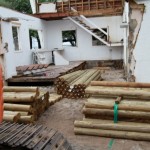 What lies beneath the home is as exceptional as what is above the ground. Timber piles were chosen in preference to steel piles, being high in embodied energy and requiring significant carbon emissions to produce the 24 metres of steel for each of the 49 pile locations would have been an unsatisfactory choice. The timber required for the piles was acquired from renewable sources. The timber piles were driven a deep 24m metres into the ground due to the result of the poor soil quality.
What lies beneath the home is as exceptional as what is above the ground. Timber piles were chosen in preference to steel piles, being high in embodied energy and requiring significant carbon emissions to produce the 24 metres of steel for each of the 49 pile locations would have been an unsatisfactory choice. The timber required for the piles was acquired from renewable sources. The timber piles were driven a deep 24m metres into the ground due to the result of the poor soil quality.
Form work and ARC recycled steel foundations.
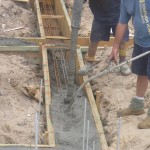 Structural work on any residential property demands some structural products that maintain the integrity of the design of the home, this requires material that are traditionally high in embodied energy such as steel or concrete. Whilst concrete is required, The Beachmere Project’s supplier, Hanson have in recent times focused on product development the has reduced environmental impact. Hanson achieves this by using by-products (coarse aggregates) and recycled water during cement production. This, combined with reusing demolition materials usually targeted for landfill (such as broken block work and masonry) was back-filled into the site. This delivered a substantial reduction in waste requiring transportation from the site. Form work surrounding the footings reduced the total concrete required for the work to be completed.
Structural work on any residential property demands some structural products that maintain the integrity of the design of the home, this requires material that are traditionally high in embodied energy such as steel or concrete. Whilst concrete is required, The Beachmere Project’s supplier, Hanson have in recent times focused on product development the has reduced environmental impact. Hanson achieves this by using by-products (coarse aggregates) and recycled water during cement production. This, combined with reusing demolition materials usually targeted for landfill (such as broken block work and masonry) was back-filled into the site. This delivered a substantial reduction in waste requiring transportation from the site. Form work surrounding the footings reduced the total concrete required for the work to be completed.
go back to ALL GALLERIES








